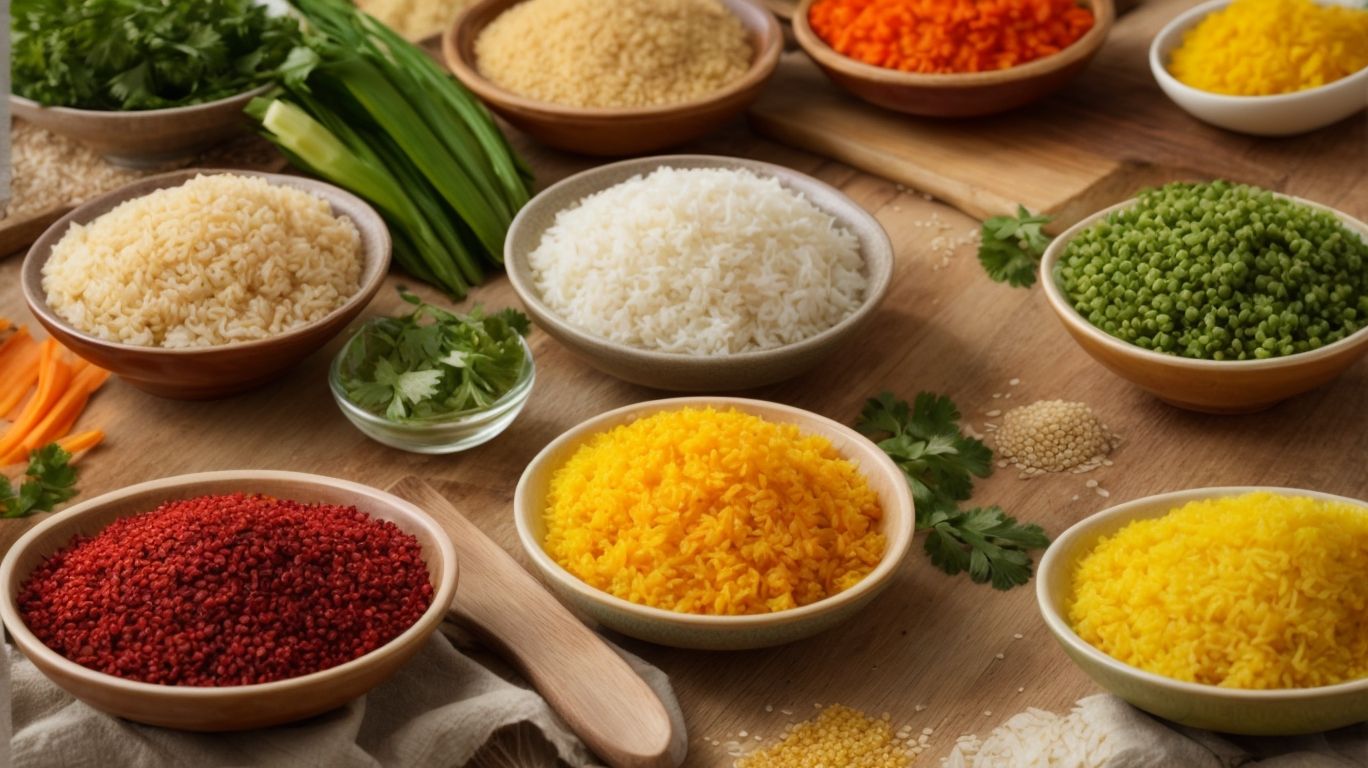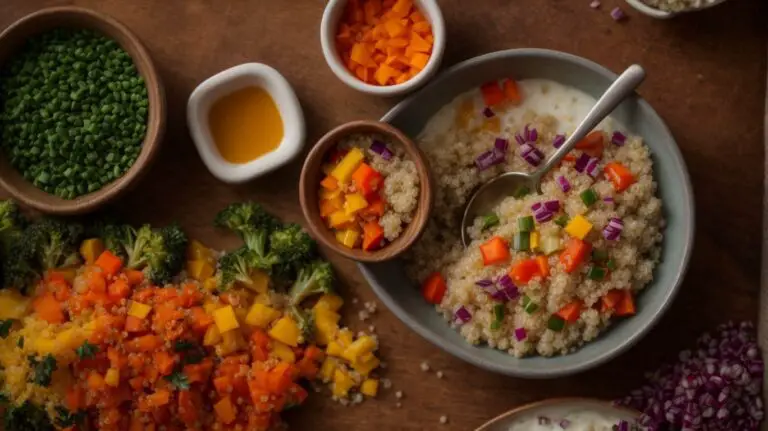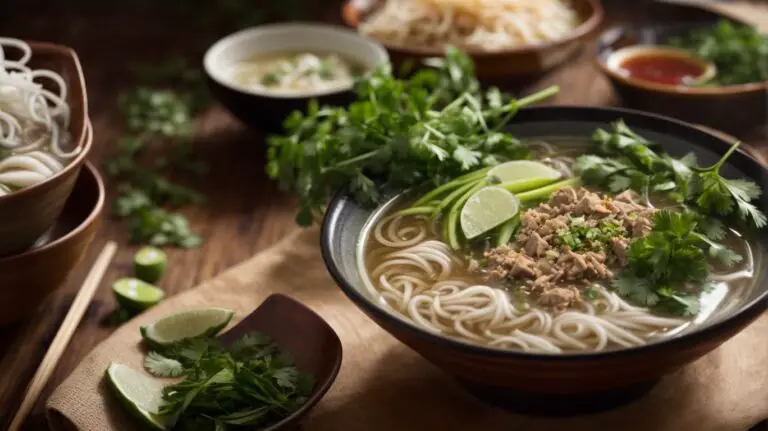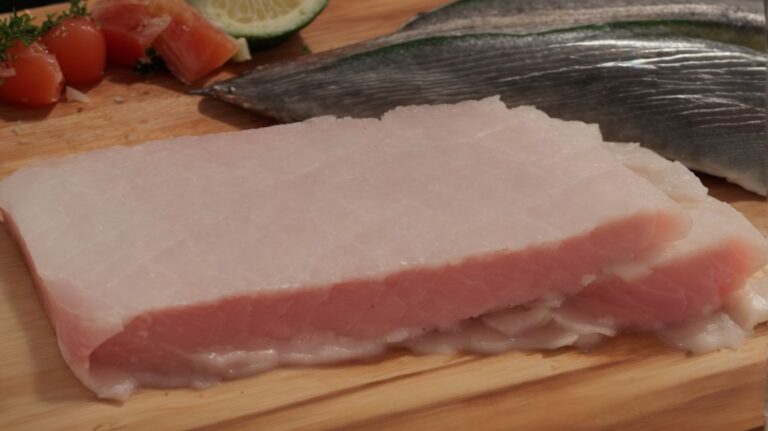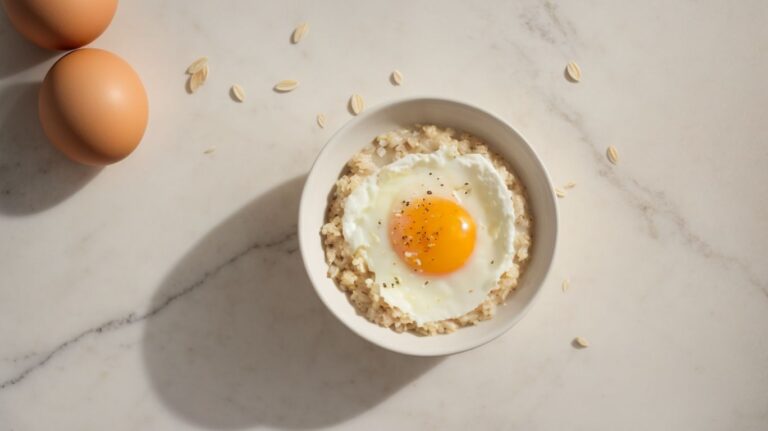How to Cook Millet With Rice?
Looking to add a healthy twist to your meals?
Millet and rice are two versatile grains packed with nutritional benefits.
We will explore what millet and rice are, their nutritional benefits, and how to prepare them for cooking.
We will also discuss the best ways to cook millet and rice together, including the ratio of millet to rice and different cooking methods.
Plus, we’ll share some tips for adding flavor and storing leftovers.
Stay tuned for delicious recipes using cooked millet and rice, perfect for your next meal! Let’s get cooking!
Key Takeaways:
About Millet and Rice
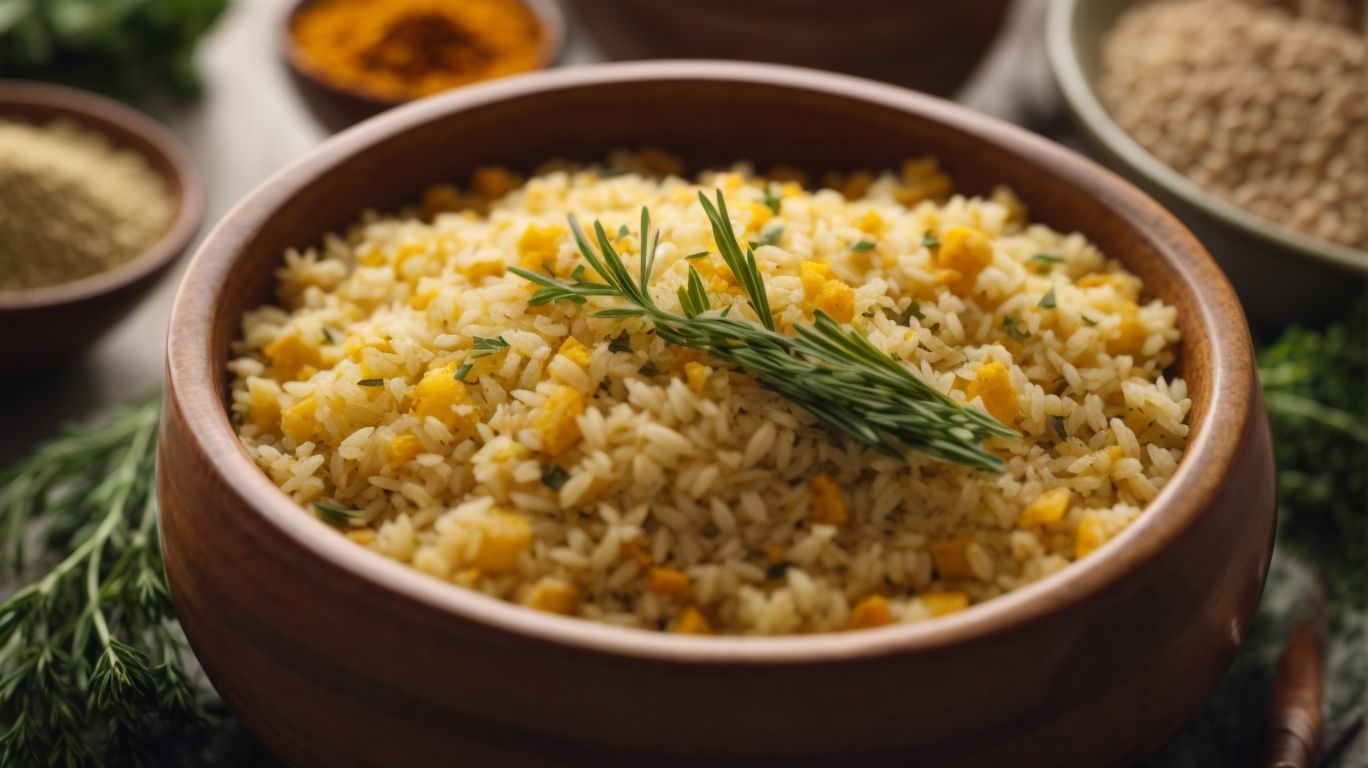
Credits: Poormet.Com – Carl Walker
Millet and rice are versatile grains known for their gluten-free properties and nutritional benefits.
These ancient grains not only cater to individuals with gluten sensitivities but also offer a myriad of nutritional advantages. Millet, rich in essential nutrients such as magnesium, phosphorus, and fiber, plays a vital role in maintaining cardiovascular health and aiding digestion. On the other hand, rice, a staple in many cultures worldwide, provides a good source of energy, promotes satiety, and is easily digestible.
In terms of preparation, millet and rice can be cooked in various ways to suit different palates and dietary preferences. Whether enjoyed as a hearty grain bowl, a side dish, or incorporated into baking recipes, these grains offer endless possibilities for creating delicious and nutritious meals.
As per the USDA guidelines, millet and rice can be part of a balanced diet, providing essential vitamins, minerals, and dietary fiber necessary for overall well-being. Whether you opt for a comforting bowl of rice porridge or a flavorful millet salad, these versatile grains are sure to please both your taste buds and nutritional needs.
What is Millet?
Millet, a gluten-free grain, is a staple crop in many regions like Africa and China, offering millet flour as a versatile ingredient.
With its delicate, nutty flavor and slightly crunchy texture, millet can be used in a variety of dishes, including porridges, bread, and salads. This ancient grain is rich in essential nutrients like iron, magnesium, and folic acid. According to the USDA, millet is a great source of fiber and protein, making it a healthy addition to any diet. Millet flour, in particular, is becoming increasingly popular in gluten-free baking as a nutritious alternative to traditional wheat flour.
What is Rice?
Rice, a gluten-free grain, is a dietary staple globally, providing essential nutrition and culinary flexibility.
Grain is a term used to describe the seeds of various cultivated grasses, such as rice, wheat, and corn. These grains are a significant source of carbohydrates, providing energy for the human body. In terms of nutrition, rice contains essential vitamins and minerals like manganese, selenium, and magnesium. Its versatility in the kitchen allows it to be used in savory dishes, desserts, and even beverages. This makes rice not only a delicious and filling option but also a nutritionally valuable one.
What are the Nutritional Benefits of Millet and Rice?
Both millet and rice offer a nutritional profile rich in essential nutrients, making them ideal choices for gluten-free diets.
While millet is known for its high levels of magnesium, phosphorus, and fiber, rice, especially brown and wild varieties, provides a good source of vitamins and minerals like B vitamins, iron, and manganese.
Millet’s gluten-free nature makes it suitable for those with celiac disease or gluten intolerance, as it does not trigger any adverse reactions. On the other hand, rice, recognized by the USDA for its health benefits, is a staple food that complements various dishes and cuisines worldwide.
Both grains can be incorporated into a balanced diet to enhance overall nutrition and well-being.
Preparing Millet and Rice for Cooking
Properly rinsing and soaking millet and rice are essential steps in their preparation before cooking, ensuring optimal texture and flavor.
When preparing millet and rice, the rinsing process helps remove excess starch and impurities, preventing the grains from becoming overly sticky during cooking. It also enhances the overall taste by ensuring they cook evenly.
Soaking millets or rice before cooking is especially crucial for certain types like brown rice or whole grain varieties, as it softens the grains and reduces the cooking time, making them easier to digest.
For millet, a quick soak of 15-30 minutes can suffice, while brown rice may require soaking for several hours or overnight to achieve optimal results.
How to Rinse Millet and Rice?
Rinsing millet and rice involves washing them thoroughly under running water to remove excess starch and debris, enhancing their flavor and quality.
Once you have rinsed the millet and rice, it’s essential to properly prepare them for cooking. Keep in mind that the rinsing process not only improves the taste but also removes impurities. After rinsing, allow them to drain for a few minutes before transferring them to a clean and dry container.
Properly storing the rinsed millet and rice in an airtight container or sealed bag will help maintain their freshness and prevent any contamination. Remember to label the container with the date of rinsing for easy tracking of their shelf life.
How to Soak Millet and Rice?
Soaking millet and rice in water for a specified time softens the grains, reducing cooking time and improving overall texture in dishes.
This simple but crucial step allows the grains to absorb moisture, resulting in plumper and more tender millet and rice. By soaking, you are essentially jumpstarting the cooking process, making the grains less likely to become mushy or overcooked. The softened texture also enhances the flavors, allowing seasonings and spices to penetrate more effectively. Once soaked, the grains cook more evenly, ensuring a consistent texture throughout your dish. Incorporating this soaking method into your cooking routine can elevate the quality of your meals significantly.
How to Cook Millet and Rice Together?
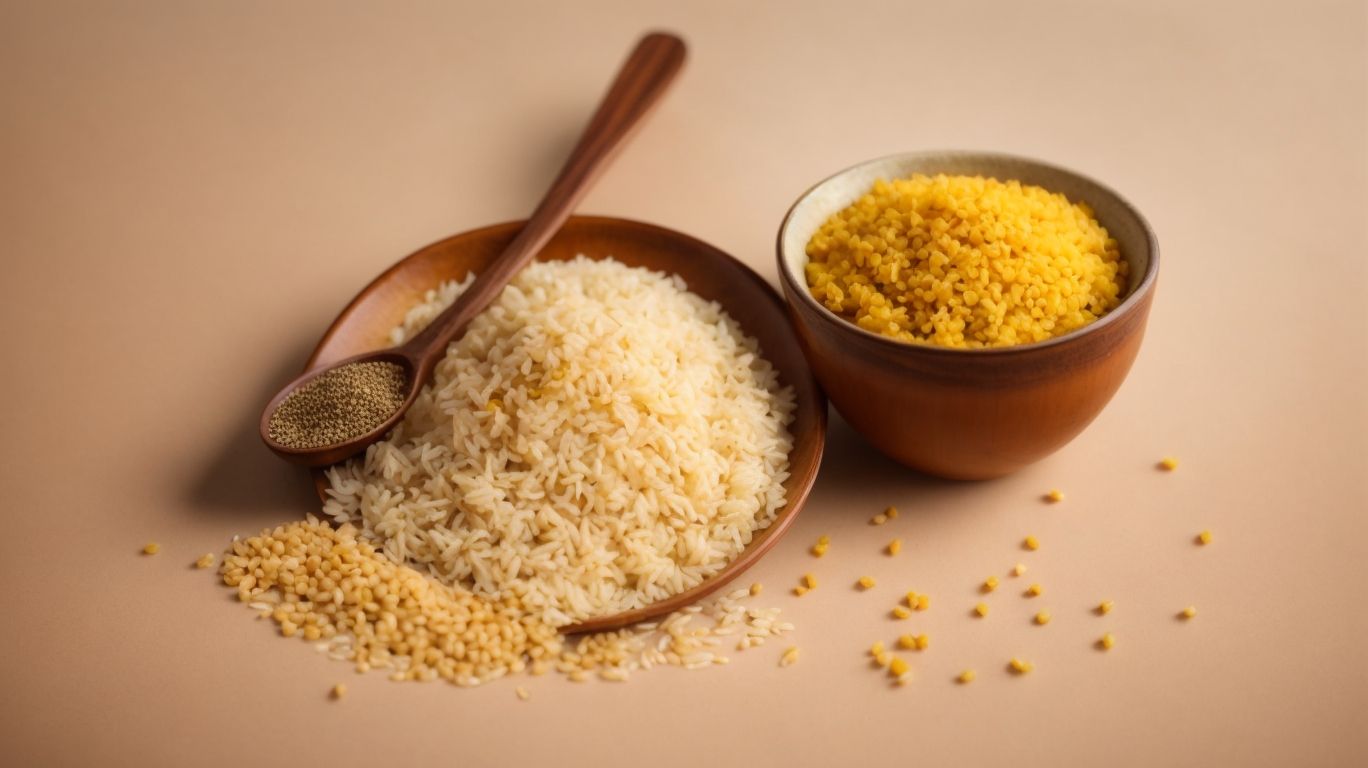
Credits: Poormet.Com – Bradley Hall
Combining millet and rice in cooking offers a unique blend of flavors and textures, enhancing the overall dish with their grain characteristics.
One popular way to prepare a dish using this combination is to cook them together in a rice cooker or pot. The millet adds a subtle nutty flavor while the rice provides a soft and fluffy texture. This pairing not only creates a more interesting eating experience but also offers a nutritional boost by combining the benefits of both grains. These two grains complement each other well in terms of cooking time and flavor profiles, making it a versatile option for various recipes.
What is the Ratio of Millet to Rice?
Maintaining the right ratio of millet to rice is crucial for balanced cooking, ensuring both grains cook uniformly and harmoniously.
When combining millet and rice, the recommended ratio is typically two parts water to one part grain. This ensures the grains absorb the moisture evenly, resulting in a perfect texture.
Proper preparation is key to achieving this balance. Rinse the millet and rice separately to remove excess starch, which can affect the final consistency of the dish. Allow them to drain well before cooking to avoid excess moisture in the pot. By following these simple steps, you’ll be on your way to perfectly cooked millet and rice every time.
What are the Different Cooking Methods for Millet and Rice?
Several cooking methods can be used for millet and rice, including boiling, toasting, and simmering, allowing the grains to express their unique flavors.
Boiling is a common method where the grains are cooked in water until tender, resulting in a soft texture. Alternatively, toasting involves heating the grains in a dry pan until they are slightly browned for a nutty flavor. Simmering is another gentle cooking technique where the grains are cooked in a covered pot with a flavorful broth or liquid.
Cooking methods play a crucial role in bringing out the best in millet and rice, allowing for versatile dishes that are both nutritious and delicious.
How to Cook Millet and Rice in a Rice Cooker?
Cooking millet and rice in a rice cooker simplifies the process, ensuring perfectly cooked grains without constant monitoring, ideal for busy kitchens.
The benefit of using a rice cooker is its hands-off approach, allowing you to set it and forget it until your grains are perfectly cooked. With different cooking settings for various types of grains, such as white rice, brown rice, or even mixed grains, a rice cooker takes the guesswork out of achieving the perfect texture and consistency. Millet, with its delicate flavor and fluffy texture, can be challenging to cook on the stovetop, but a rice cooker ensures even cooking and fluffiness every time.
How to Cook Millet and Rice on the Stove?
Cooking millet and rice on the stove allows for precise control over the cooking process, enabling the creation of flavorful and nutritious dishes.
When cooking these grains on the stove, you can easily adjust the heat levels to ensure they are cooked to perfection. This method is not only versatile but also allows you to experiment with different seasonings and ingredients to elevate the taste profile of your dishes. Cooking millet and rice on the stove is cost-effective and suitable for a wide range of recipe variations, from making traditional pilafs to creative one-pot meals. With the stove, you have the flexibility to customize the cooking time and technique according to your preferred texture and consistency, resulting in a satisfying culinary experience.
Tips for Cooking Millet and Rice
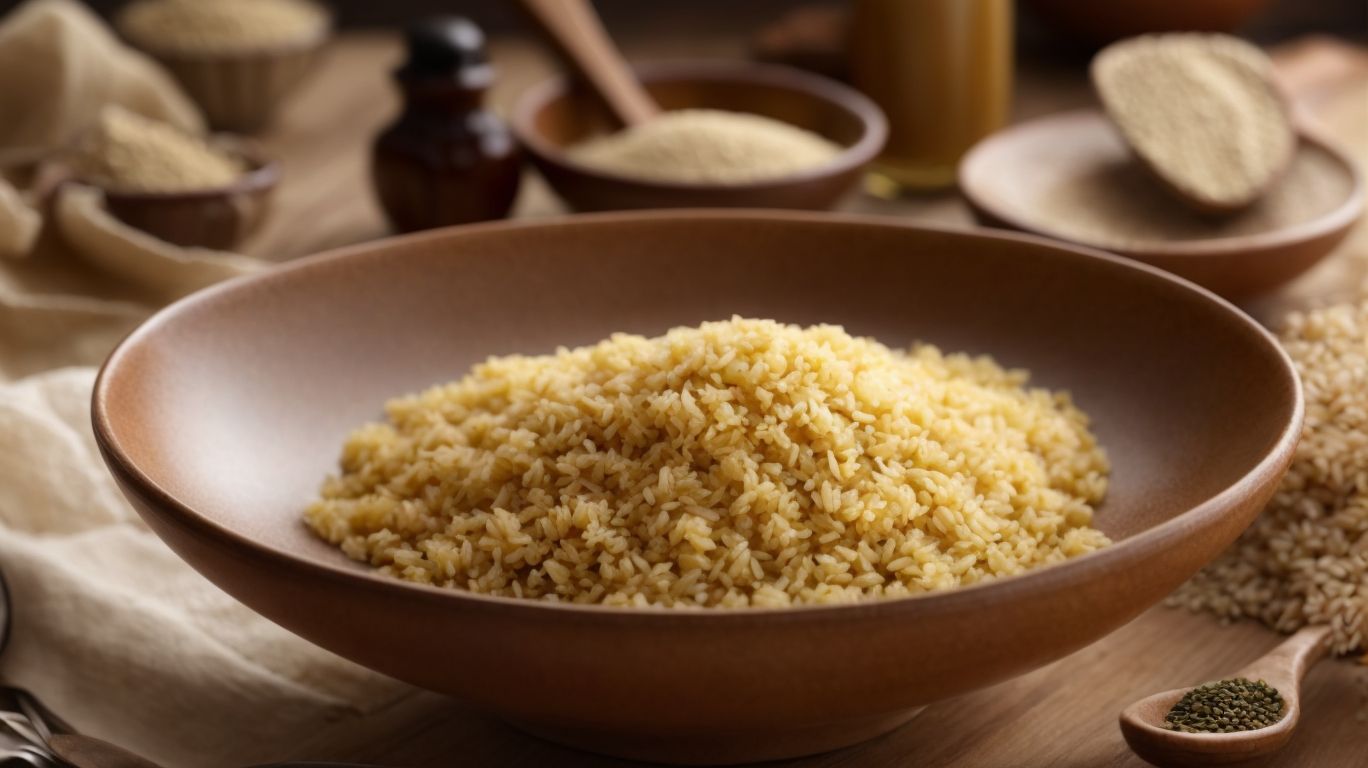
Credits: Poormet.Com – Alan Sanchez
Enhance the flavor of millet and rice dishes by incorporating herbs and spices during cooking, while ensuring proper storage to maintain their nutritional value.
Herbs like cilantro, thyme, and basil can elevate the taste of millet and rice dishes, adding depth and complexity to your meals. Spices such as cumin, turmeric, and paprika bring warmth and aroma to these grains, transforming a simple dish into a culinary delight.
For optimal flavor enhancement, consider toasting the spices before adding them to your cooking. This releases their essential oils and intensifies their flavors, giving your millet and rice dishes a rich and aromatic taste.
How to Add Flavor to Millet and Rice?
Infusing millet and rice with aromatic herbs, spices, and seasonings elevates their taste profiles, creating delightful and flavorful dishes.
In terms of enhancing the flavor of millet and rice, there are numerous creative ways to play with ingredients. One popular method is to cook the grains in a well-seasoned broth or stock instead of plain water, adding depth and complexity to the dish.
Incorporating fresh ingredients like garlic, ginger, and jalapenos can provide a zesty kick to the grains. Experimenting with different cooking techniques such as toasting the grains before cooking or tossing them with a spice blend can also create unique and mouth-watering flavors.
How to Store Leftover Millet and Rice?
Store leftover millet and rice in airtight containers in the refrigerator or freezer to prolong their shelf life and maintain freshness for future use.
When storing millet and rice in airtight containers, make sure to remove as much air as possible to prevent them from becoming stale or absorbing any unwanted odors from the fridge. Labeling the containers with the date of storage can help you keep track of their freshness. If you opt for the freezer, remember that both millet and rice can be stored for extended periods in this manner, maintaining their flavor and texture. Consider portioning them into smaller containers for easier thawing and consumption.
Recipes Using Cooked Millet and Rice
Create delectable dishes like Millet and Rice Pilaf, Porridge, and Salad using cooked millet and rice, showcasing their gluten-free versatility.
If you’re looking to add a twist to your meals, try incorporating millet and rice in your recipes. Their mild flavors and fluffy textures make them great additions to various cuisines.
For a comforting dish, mix cooked millet and rice with vegetables, herbs, and spices to create a flavorful pilaf. Combine them in a creamy porridge for a nutritious breakfast option that will keep you energized throughout the day. Alternatively, toss them with fresh greens and your favorite toppings to craft a vibrant and nutrient-packed salad.
Millet and Rice Pilaf
Millet and Rice Pilaf is a savory dish featuring aromatic spices and vegetables, creating a flavorful and satisfying meal.
Traditionally originating from the Middle East and South Asia, this versatile pilaf dish is known for its rich and complex flavors.
- To make Millet and Rice Pilaf, you start by sautéing onions, garlic, and ginger in a mixture of ghee and oil until golden brown.
- Next, add in a blend of fragrant spices, such as cumin, coriander, and turmeric, to enhance the dish’s aroma and taste.
Simultaneously, toast the millet and rice in the same pan, allowing them to absorb the flavors of the spices and aromatics. The addition of vegetable broth or water helps cook the grains to perfection, resulting in a fluffy and light texture.
Millet and Rice Porridge
Millet and Rice Porridge is a comforting and sweet dish, perfect for breakfast or a wholesome dessert option.
This delectable porridge combines the nuttiness of millet with the creamy texture of rice, creating a delightful balance of flavors and textures. The sweetness of the dish can be customized to suit your taste preferences, whether you prefer a touch of honey, maple syrup, or a sprinkle of cinnamon sugar. The versatility of this recipe allows you to experiment with various toppings such as fresh fruits, nuts, or seeds, adding a nutritious twist to your meal.
Millet and Rice Salad
Millet and Rice Salad is a nutritious and flavorful dish packed with fresh ingredients and vibrant flavors, ideal for a light and healthy meal.
One of the key benefits of this salad is its diversity of textures and flavors. The combination of the nutty millet, fluffy rice, crunchy vegetables, and zesty dressing creates a delightful eating experience. Not only is this salad visually appealing with its array of colorful ingredients, but it also provides a good balance of carbohydrates, protein, and vitamins.
Additionally, salads like this are great for incorporating whole grains into your diet, which can help improve digestion and provide sustained energy throughout the day. You can customize this dish with your favorite vegetables and herbs to suit your taste preferences.
Frequently Asked Questions
What is the best way to cook millet with rice?
The best way to cook millet with rice is to first rinse both grains, then combine them in a pot with water. Bring to a boil, then cover and reduce heat to a simmer for about 20 minutes. Fluff with a fork and let it sit for 5 minutes before serving.
Can I cook millet and rice together in a rice cooker?
Yes, you can cook millet and rice together in a rice cooker. Simply follow your rice cooker’s instructions for cooking rice, but add in the millet in a 1:1 ratio. For example, 1 cup of rice and 1 cup of millet would require 2 cups of water.
Are there any health benefits to cooking millet with rice?
Yes, there are many health benefits to cooking millet with rice. Millet is a gluten-free grain that is rich in fiber and contains essential minerals like iron and magnesium. When combined with rice, it can provide a well-rounded source of nutrients.
How can I add more flavor to my millet and rice dish?
To add more flavor to your millet and rice dish, you can cook it in broth instead of water, add in your favorite herbs and spices, or mix in some sautéed vegetables. You can also top it with a sauce or dressing for added flavor.
Can I substitute millet for rice in recipes?
Yes, millet can be substituted for rice in recipes. However, keep in mind that millet has a slightly different texture and cooking time compared to rice, so adjustments may need to be made. It is best to experiment and find what works best for your recipe.
What are some creative ways to use cooked millet and rice?
There are many creative ways to use cooked millet and rice. You can make a hearty grain bowl, use it as a base for stir-fry, add it to soups or stews, or even use it in place of oats for a breakfast porridge. The possibilities are endless!

